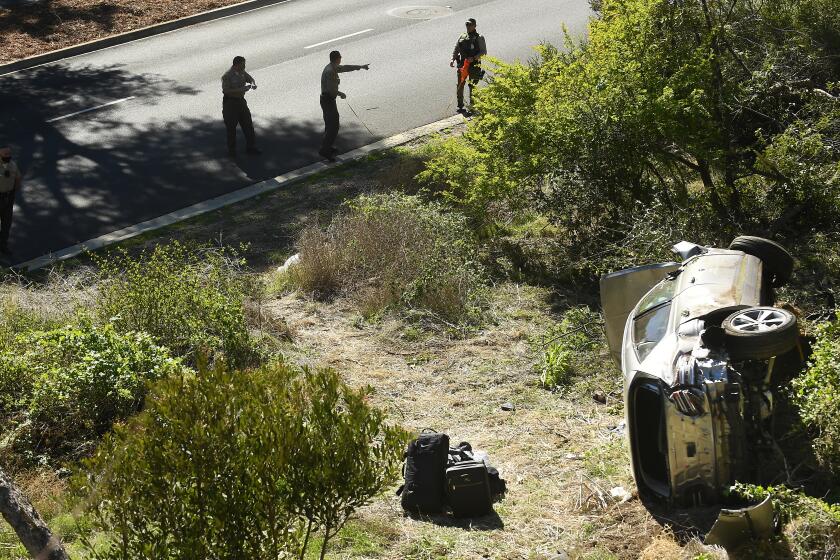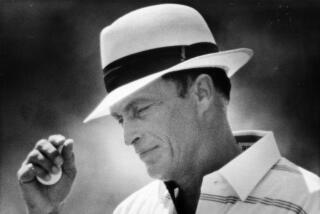Tiger Woods’ car accident a reminder of what Ben Hogan achieved after near-fatal crash
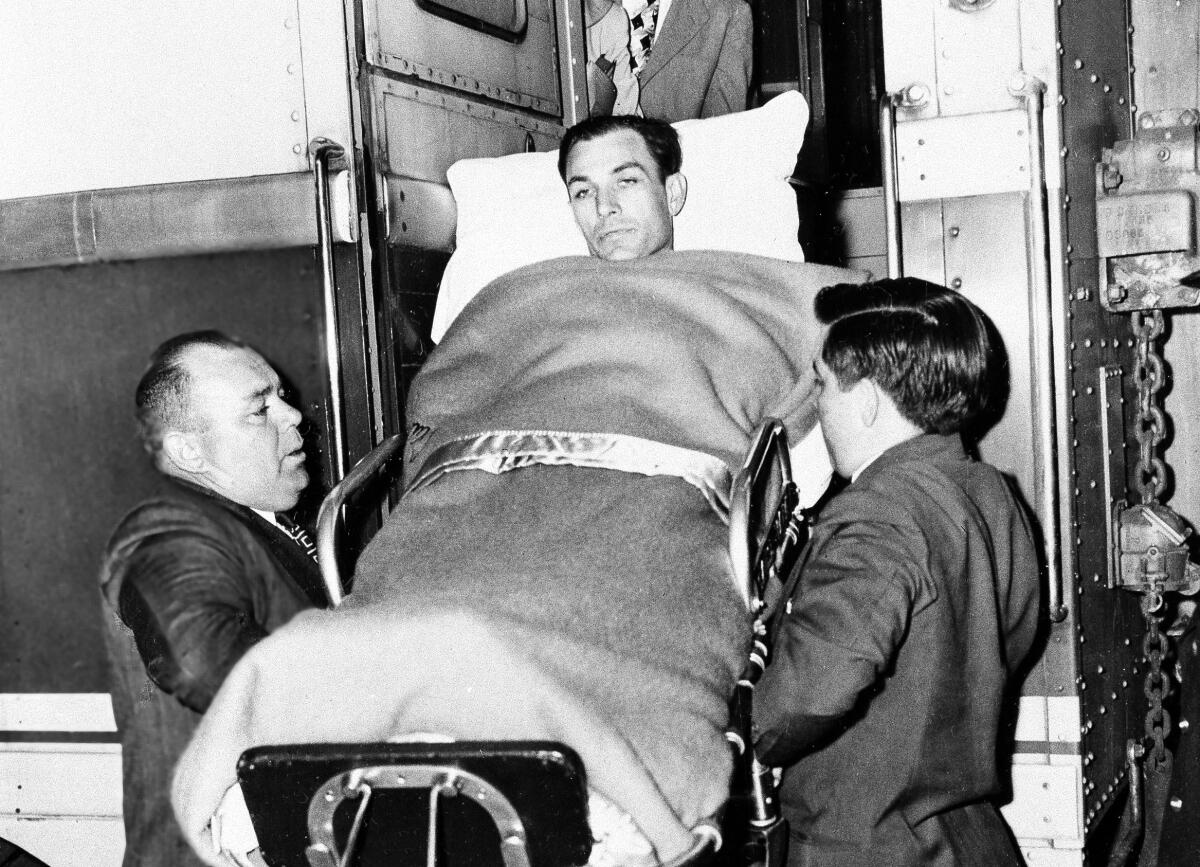
It was nearly time for Jim Dodson’s afternoon drink when he heard what happened to Tiger Woods.
Dodson, an author of seven golf books, has the sport’s history scrawled into his knuckles. As he processed the news of Woods’ harrowing car crash Tuesday over a biographer’s bourbon, Dodson’s daughter called with an easy comparison to one of her father’s subjects.
“They’re saying Tiger’s injury is worse than Ben Hogan’s,” she said.
“No, it’s not,” Dodson assured her.
For Dodson, the memories began flooding back. To be frank, he originally hadn’t been all that interested in Hogan as a topic. He was more of an Arnold Palmer guy. Palmer was golf’s first man of the people — Arnie’s Army — while Hogan had been known as a brooder who kept to himself.
Preventing infection is an issue in the recovery of Tiger Woods since bone broke skin during his car accident.
But after Hogan’s niece read Dodson’s book on Palmer, she was determined to persuade him to make her uncle more knowable to the world. Dodson agreed and was soon handed 11 boxes of materials encapsulating the life of a legend.
Hogan the hero had already been immortalized in the 1951 feature film “Follow the Sun” with Glenn Ford starring as Hogan. The story of two lovebirds from Texas climaxed with Hogan lunging in the car to protect his wife, Valerie, from an oncoming Greyhound bus. Wire services reported Hogan dead. Yet, 11 months later, he was playing at his favorite course, Riviera Country Club in Pacific Palisades, where he shocked a gallery of thousands by taking rival Sam Snead to a playoff in his first tournament after the accident.
The crash would change Hogan’s body forever, undoubtedly stripping years from his playing prime, but few knew until Dodson began interviewing his closest friends how much it had altered him personally.
Will the same be said of Woods?
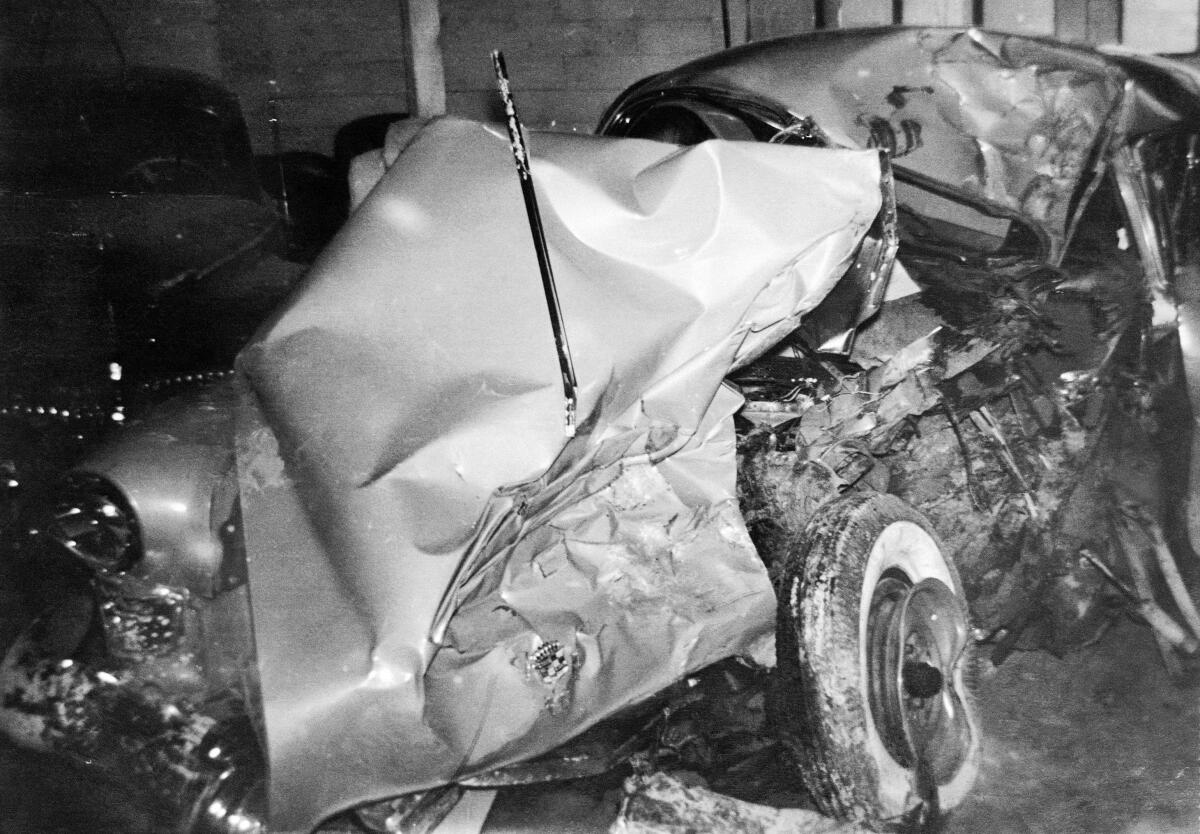
“Hogan was kind of a cold loner,” Dodson said from his North Carolina home. “He spent so many years struggling to get to the top. People dismissed him always. He never felt good. He never felt a part of anything. He reflected that. He was chilly to reporters, didn’t have time for fans, wouldn’t sign autographs.
“Well, he’s lying in the hospital, and 200-300 letters start flowing in. His wife is reading them to him, and it blew him away. He discovered he had always been this underdog in people’s minds. He never knew that people really liked him, and it transformed Ben Hogan. The thing that set him on fire to get back was the public’s love for him.”
The natural questions following Tiger Woods’ accident in Rancho Palos Verdes — once it became clear his injuries were non-life-threatening — were: Would he be able to golf again? And, even if that were feasible, could he stoke the flame within himself to write one final chapter in his storied career?
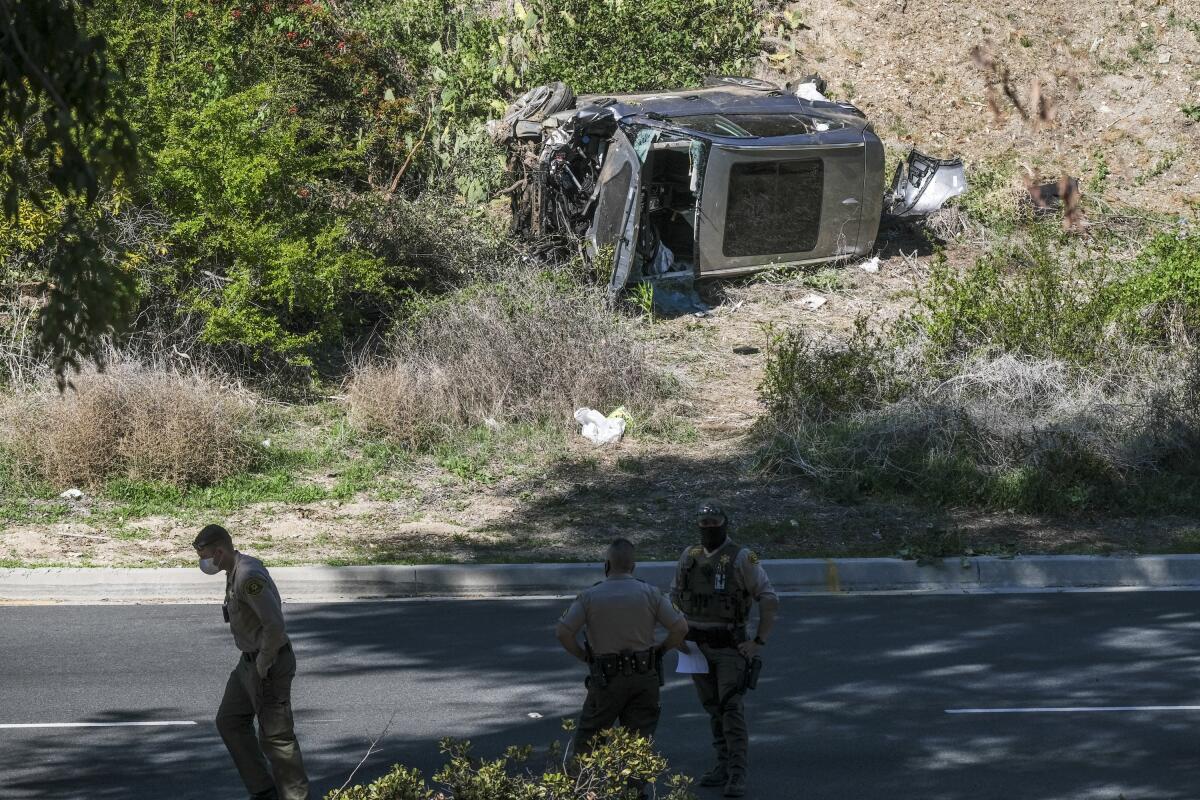
That Hogan, a nine-time major champion, had won six of those titles after his crash certainly makes it seem possible, especially for an athlete of Woods’ caliber.
But their situations are not as similar as they may seem. Hogan was 36 and had just risen to the top of the sport after 15 years hustling. Woods is 45 and spent his 20s lording over the game, his 30s being humbled to the core and the first half of his 40s trying to reclaim what had been lost. At his age, and with the young, Tiger-inspired next generation of golfers entrenched on leaderboards, there are no guarantees he will win a major again.
Authorities said Woods was lucky to have survived, and the same can be said of Hogan. His injuries included a double-fractured pelvis, a fractured collarbone, a fractured left ankle, a chipped rib and near-fatal blood clots. Factor in the realities of medical ingenuity in 1949, and there was well-placed doubt whether he would walk again.
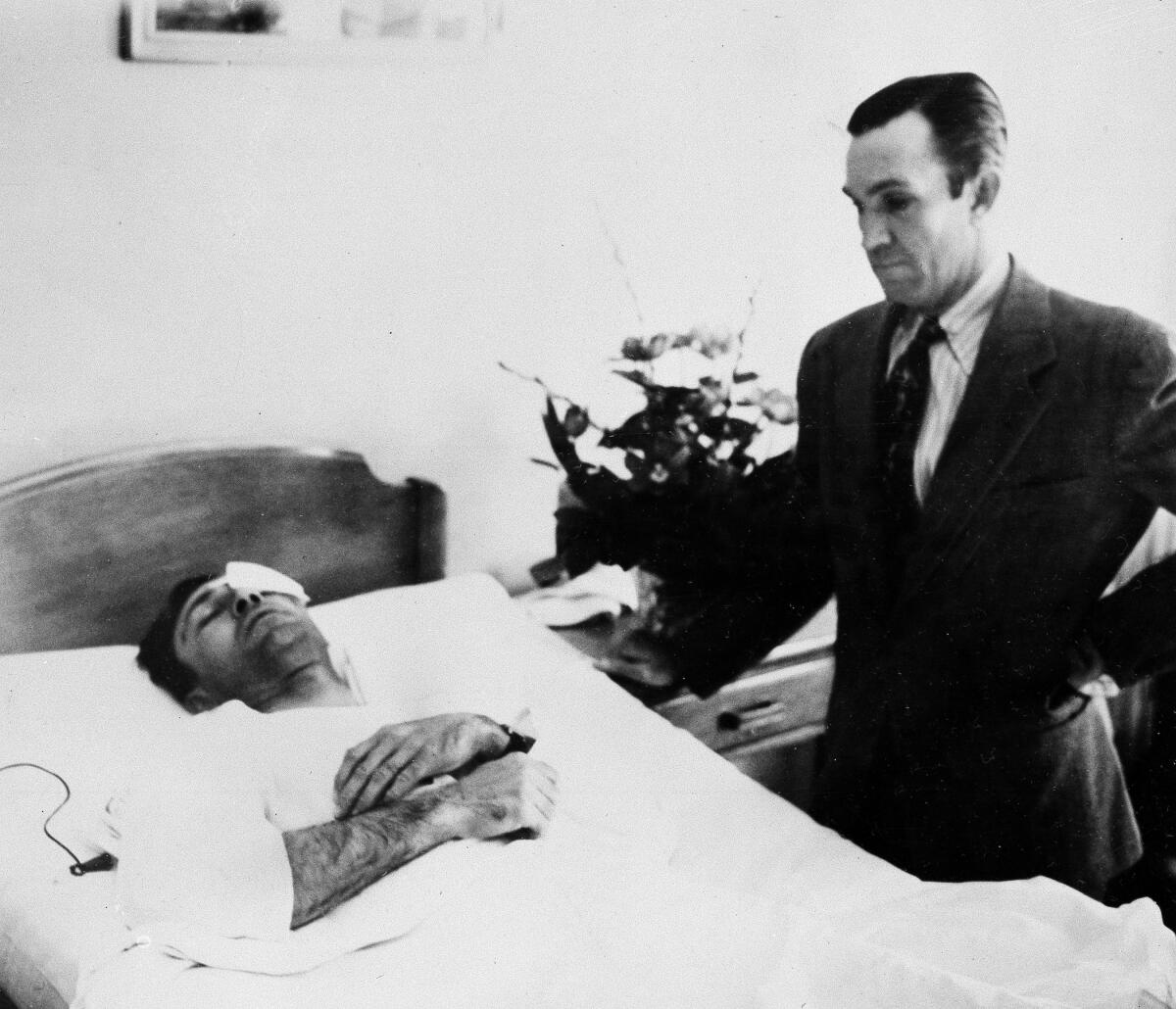
Woods’ injuries include a shattered ankle and two leg fractures, and he will have the best orthopedic surgeons in the world at his bedside.
Thinking back to the impact of the crash on Hogan personally, Dodson wonders how Woods will take stock of his life in the aftermath of this latest calamity. He recalls an interaction he observed between Palmer and a young Woods in which “Arnie” told Tiger he needs to develop the “common touch” and give more of himself to fans.
“He didn’t take Arnold’s dear advice,” Dodson said. “But Tiger was groomed from the beginning to be a Greek god. He’s lived in a world that nobody has been in. My hope for him is that he comes back a second time and that he’s even more reflective on his journey.”
::
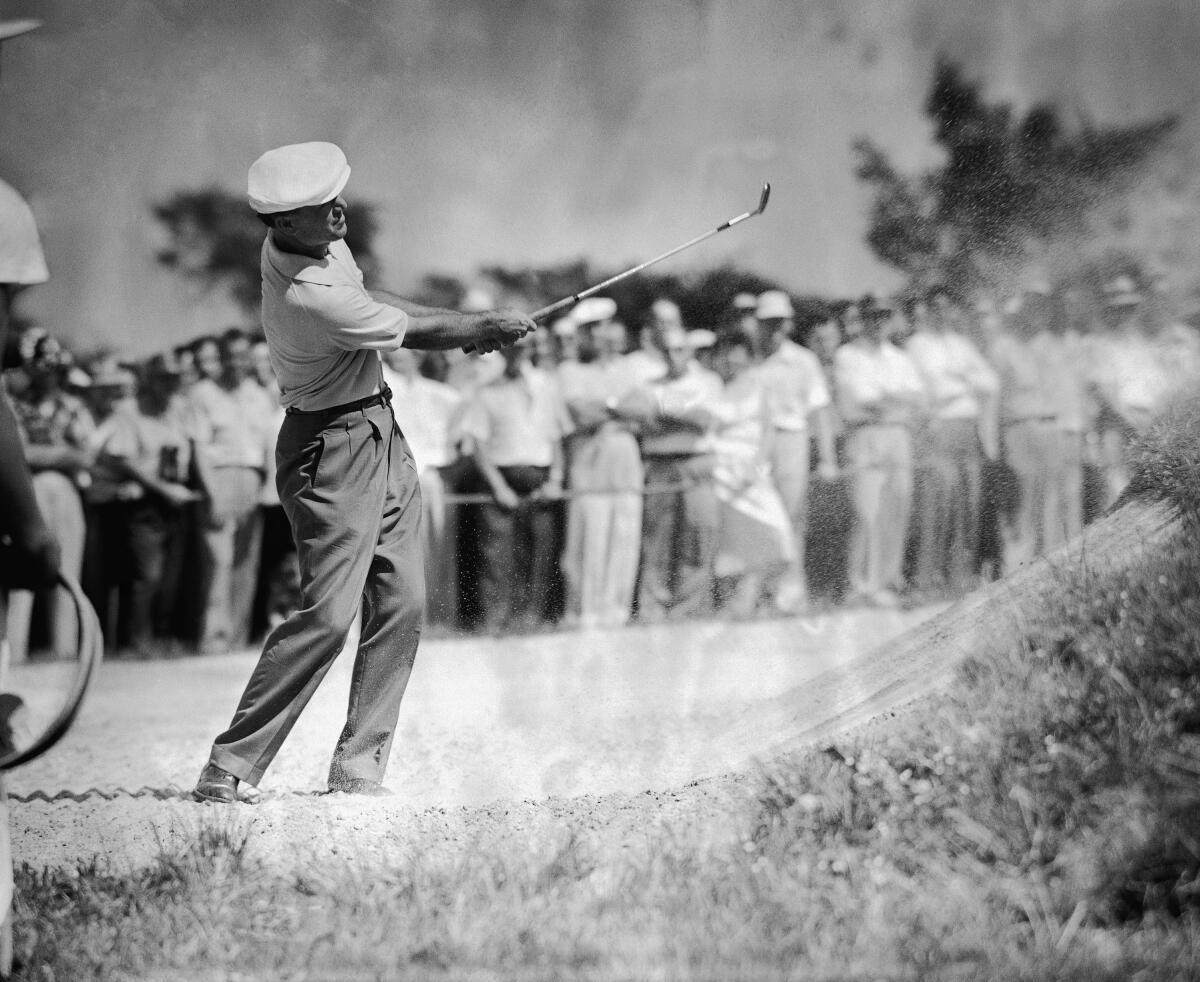
Mark Baron loved golf, as many young men do, because of the connection the game nurtured between him and his dad. Ben Hogan was just a famous name to him until 1990, when a truck rammed his car from behind and sent him into the operating room for serious back surgery.
“I wasn’t able to work, I was on disability, and I started reading up on Mr. Hogan,” Baron said.
Baron’s physical therapy was brutal. And he became fascinated by Hogan’s long convalescence, picking up details like how Hogan refused to take any painkillers other than aspirin, and tried to follow the golfer’s blueprint for toughness.
“He was an inspiration,” Baron said, “and now here I am, what, 30 years later, and I’m still playing golf, and I swear, if it wasn’t for that physical therapy, I could very easily have been debilitated and not able to do anything at this point.”
The humble Hogan could never have imagined his story could inspire a total stranger like Mark Baron — or what Baron would do next.
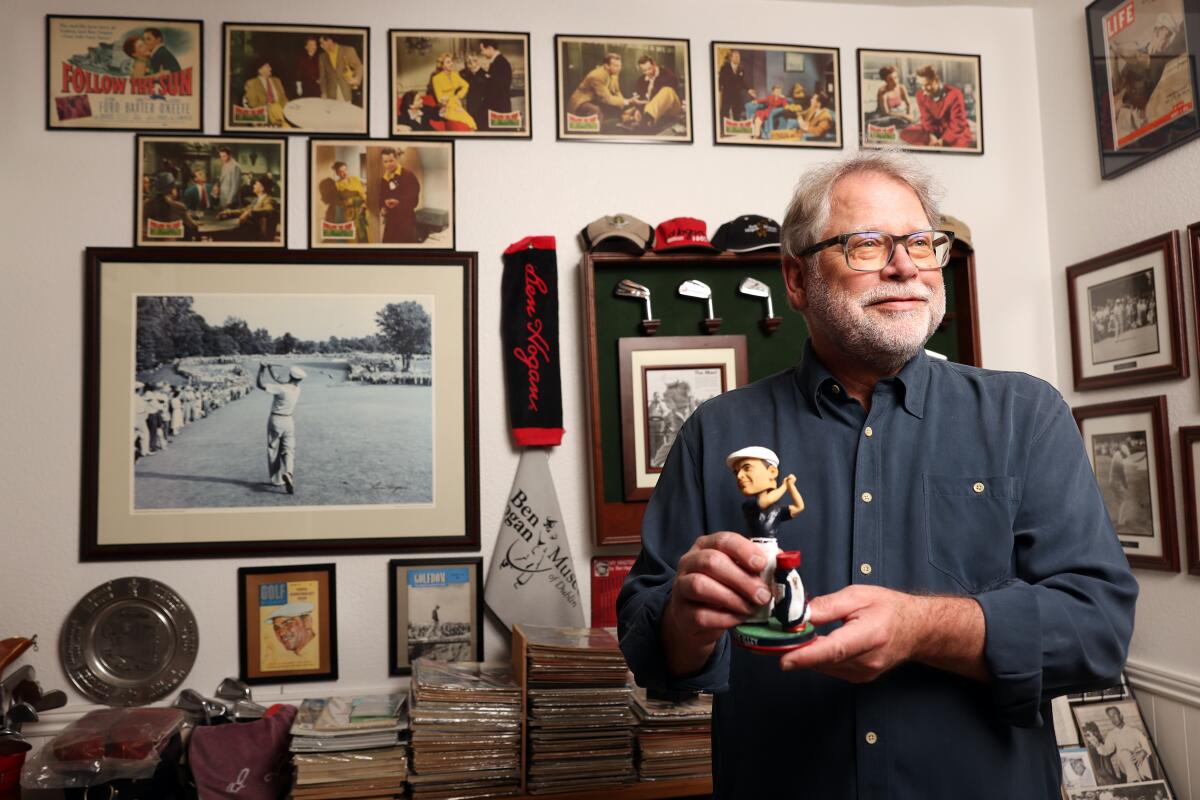
Baron, who lives in El Cajon, Calif., began collecting Hogan memorabilia. He started with a signed photo, then graduated to magazine covers and articles and, eventually, he had Hogan’s military records. He would later donate those to the Ben Hogan Museum in Dublin, Texas, along with dozens of the prized items from what would become one of the largest hauls of Hogan artifacts on the planet.
“Slowly but surely, it became an obsession,” Baron, 65, said. “Holy mackerel, if I look at the money I’ve spent. I’ve admitted I have a problem, I do. It could be worse. I could be drinking at a bar or doing drugs. I’m collecting Ben Hogan memorabilia.”
Along the way, Baron started a Ben Hogan fan Facebook page. It has more than 20,000 followers. He tries to post something daily from “This Day in Hogan History.”
For someone who has devoted three decades to keeping Hogan’s legend alive, Woods’ car crash resonated as an opportunity to share the story of his idol.
“His contemporaries, the people that saw him play or played with him, there are very few of them left,” Baron said. “Back then he was Tiger Woods. If you look at articles written then, they were saying, it’s unbelievable what he’s doing, nobody can do what he does. It’s sad, but it’s a fact that’s true: People don’t know Ben Hogan. Why would they? They don’t have that connection.”
But some still remember — and even got to see him play. Tom Barber, the longtime pro at Griffith Park Golf Club, was 7 years old when Hogan had his car crash. He recalls it better than most because his father, Jerry, was one of the best players on the PGA Tour during that era.
Tom started traveling with his dad on the circuit at around 9 years old and got to be in the orbit of stars like Hogan and Snead. Decades later, as the pro at Griffith Park, Tom was introduced to a 9-year-old Tiger Woods. How many people can say they met Hogan and Woods?
“There’s probably three or four of us,” Barber, 78, said with a laugh.
“The Hogan comeback and what he did thereafter was absolutely incredible.”
::
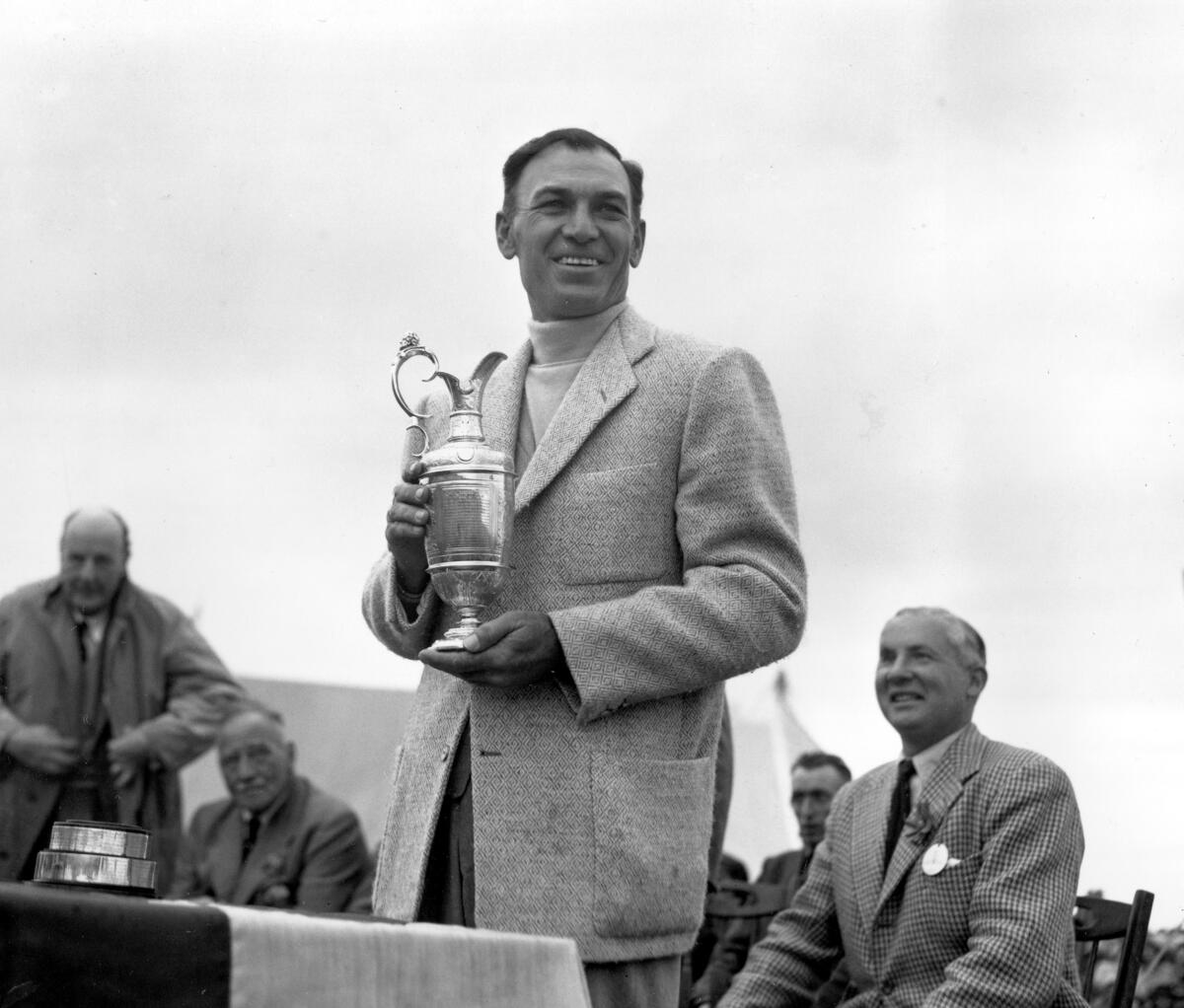
At the 2010 Masters, only five months removed from his Thanksgiving weekend nightmare and the tarnishing of his public persona, Tiger Woods put the keepers of Ben Hogan’s legacy on guard.
Woods had disappeared from public view after driving his vehicle into a fire hydrant late one night, an accident that would soon reveal his ex-wife, Elin Nordegren, had caught him cheating and gone after Woods with a golf club. He later admitted to having been with 120 women during his marriage to Nordegren.
The Masters, the major where he introduced himself in 1997 as the face of the sport, was a fitting place to resurface. Entering the tournament, he had not played competitively since the incident.
“It’s very similar to what Hogan went through coming off the accident,” Woods told reporters. “I just couldn’t play that much and when you can’t play, you have to concentrate on your practice.”
Woods, who fashions himself an eager historian of the game, probably should have known how that sounded — comparing the self-inflicted wounds of his infidelity to a 20,000-pound Greyhound nearly wiping out two lives — but he still had some growing up to do.
“Tiger,” wrote the Boston Globe’s Bob Ryan, “cease these self-aggrandizing Ben Hogan references immediately.”
If Woods drops references to Hogan again in the coming months, he should be met with friendlier reception. Over the last decade, he has stared down his personal humiliation, rehabilitated injury after injury and tried to be a father who’s available to his two kids, Sam, 13, and Charlie, 12. The payoff for those efforts came in the form of a 2019 Masters victory that practically brought the world to tears, the emotions ranging from anywhere from pure joy to relief that Tiger could finally move on.
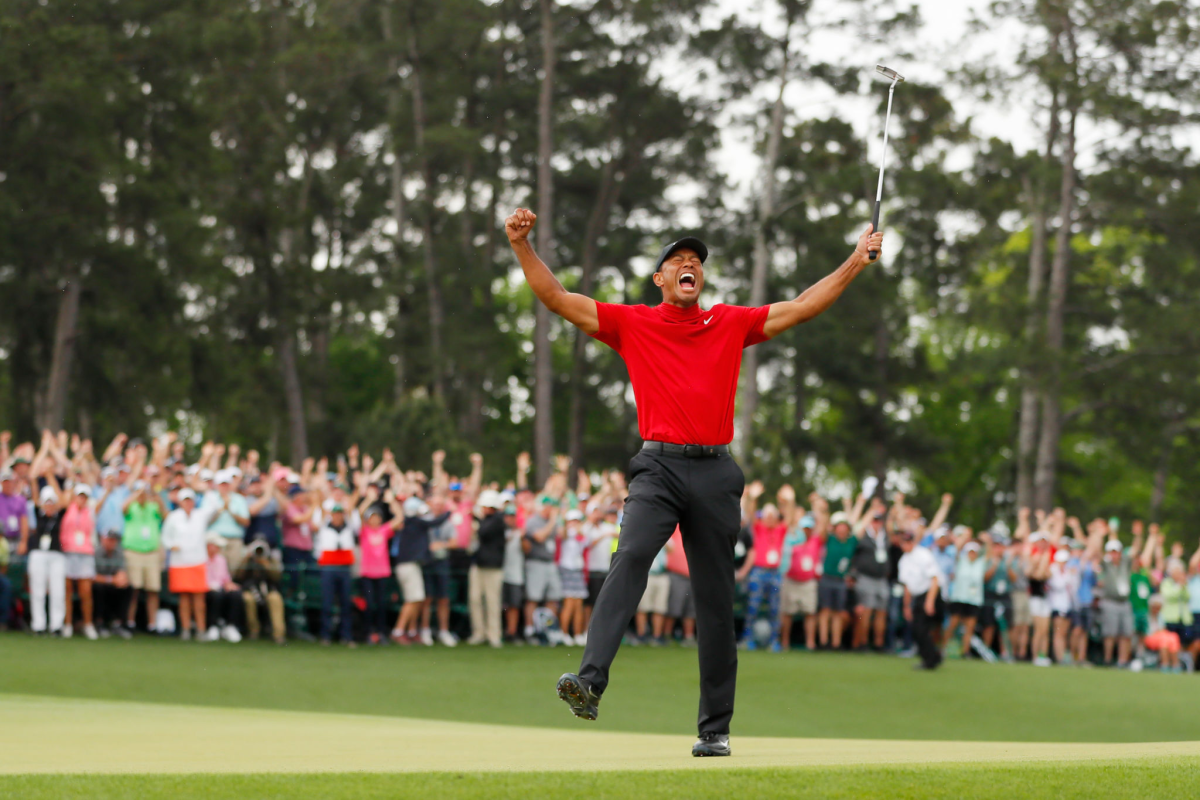
“There was that rare moment in sports, where you see that magic that created him,” Dodson said. “And maybe that was the last we’ll see of that. But I’m not so sure. I really think this is a guy whose athleticism and whose passion and the things that got him here will bring him back in a year or two.”
And maybe, like Hogan, Woods will discover motivation in the outpouring of support he has received. Everyone from Mike Tyson to Jack Nicklaus to ex-girlfriend Lindsey Vonn sent love his way on social media after news broke that his car had plunged off a curvy road in the Palos Verdes Peninsula. While adulation from adoring fans is nothing new to Woods, the overwhelmingly positive response and real concern show how far he has come since Thanksgiving 2009.
This potential comeback could feel a bit lighter without the intense personal strife. Not that Woods has ever backed away from a challenge.
“Everything Tiger has ever done in his life is similar to Mr. Hogan,” Mark Baron said. “They both have that resolve. They both are totally dedicated to the game. If anybody can do it at that age, it would be Tiger.”
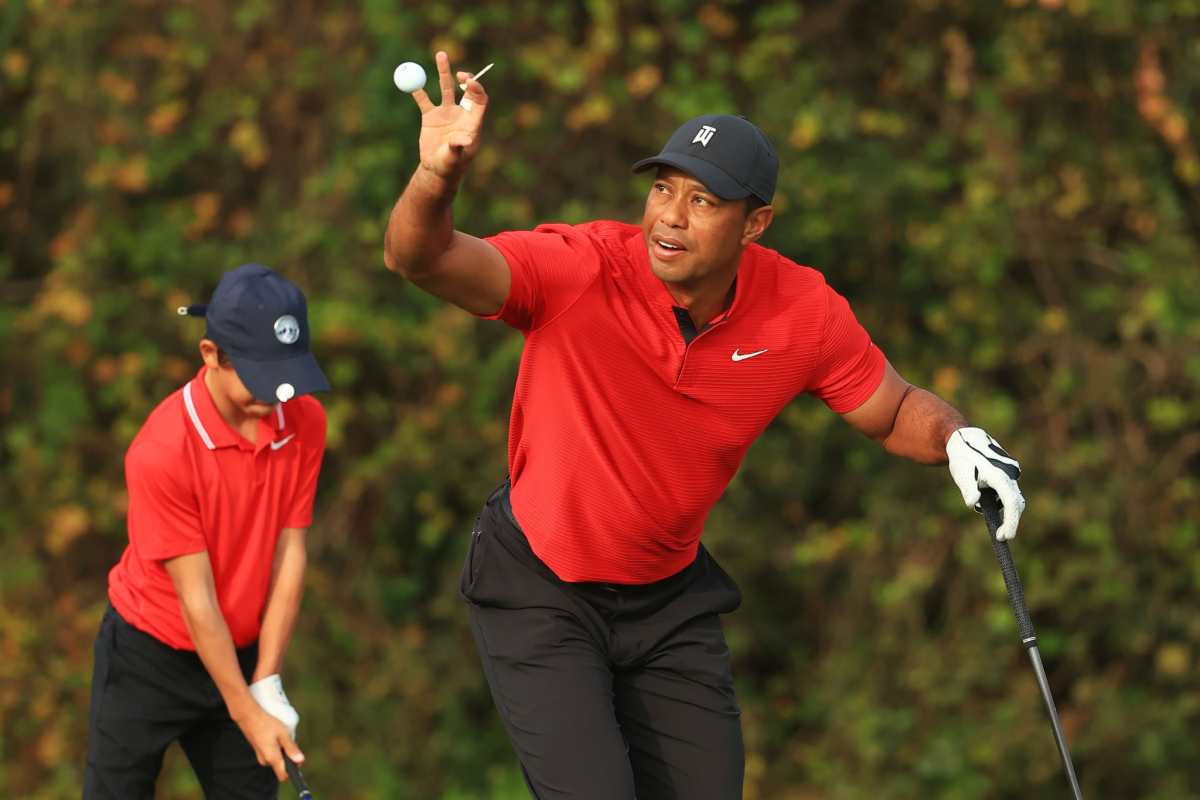
Wouldn’t it be something if Woods, in a nod to Hogan, brought golf history full circle? Just imagine: Riviera Country Club, where Hogan made his return at the 1950 L.A. Open and where Woods was hosting the Genesis Invitational last weekend before his crash, packed with hundreds in the gallery to see Tiger take his first steps toward another run at greatness.
“I know he’s tougher than nails,” Tom Barber said, “but if he never hits another golf ball I just hope he’s going to be OK, for his children, for his friends, for the world. We already know what he is as a golfer, and that’s never going to go away. It’s much more important for him to have some quality of life.”
More to Read
Go beyond the scoreboard
Get the latest on L.A.'s teams in the daily Sports Report newsletter.
You may occasionally receive promotional content from the Los Angeles Times.

